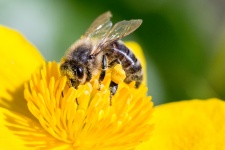 Remember old-fashioned, unalterable DNA? It was interesting stuff. So now this:
Remember old-fashioned, unalterable DNA? It was interesting stuff. So now this:
“A study of chemical tags on histone proteins hints at how the same genome can yield very different animals:”
The bee genome has a superpower. Not only can the exact same DNA sequence yield three types of insect—worker, drone, and queen—that look and behave very differently, but, in the case of workers, it dictates different sets of behaviors.
A key to the genome’s versatility seems to be epigenetic changes—chemical tags that, when added or removed from DNA, change the activity of a gene. Previous studies had shown distinct patterns of tags known as methyl groups on the genomes of bees performing different roles within their hives.Shawna Williams, “As Bees Specialize, So Does Their DNA Packaging” at The Scientist
One wonders what the tax-funded textbooks are still saying about DNA…
See also: Evolution is evolving? [It had better be.] The conference seems to be dedicated to the extended evolutionary synthesis, which it contrasts with the “modern synthesis”
and
Epigenetic change: Lamarck, wake up, you’re wanted in the conference room!